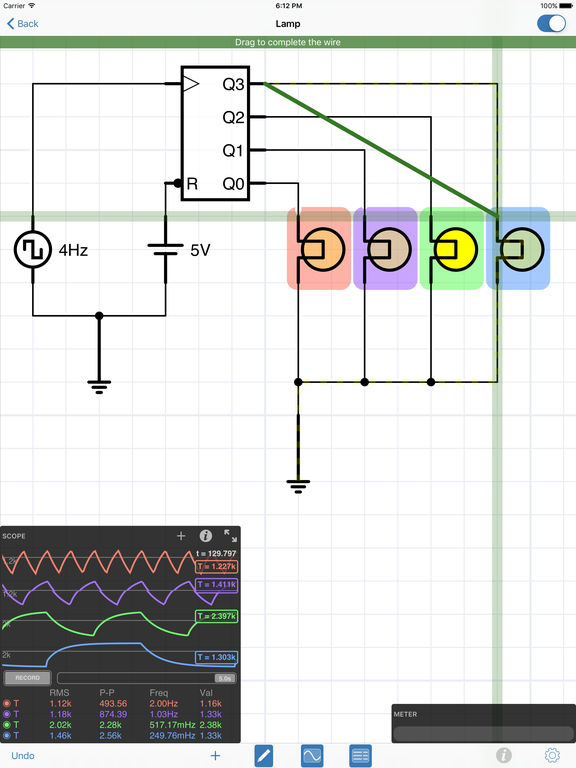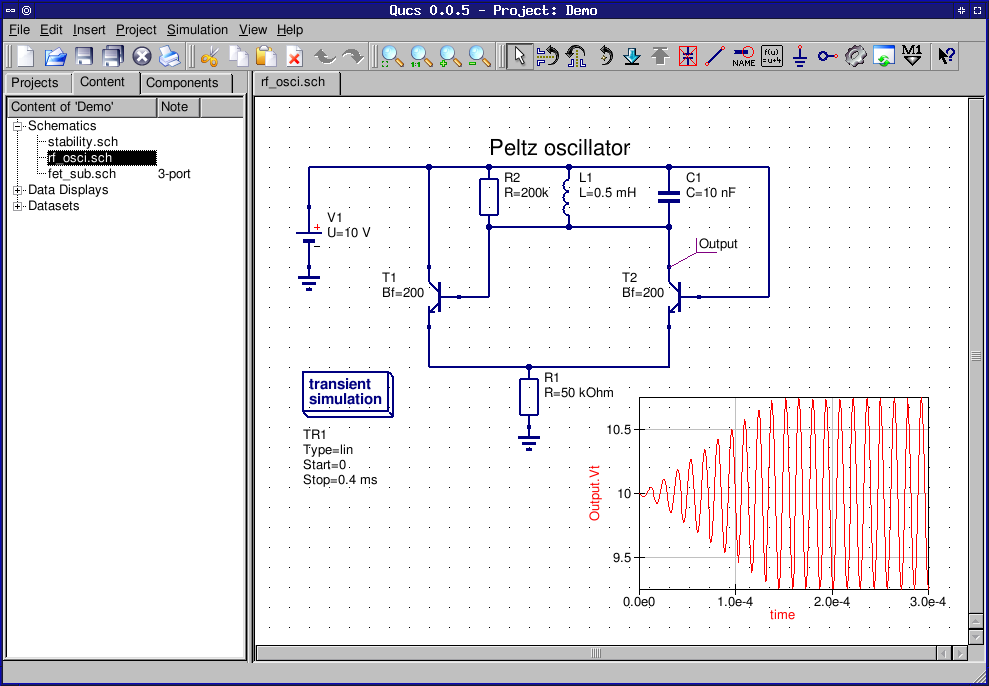

Many components have adjustments that can be made using the edit functionĮxplained above.
#Icircuit simulate simulator#
If the simulator spots unconnected points it thinks you intended to connect it will highlight these with a red circle. Wires only connect at their ends and not in the middle therefore you have to draw each segment of a wire separately. If you click and drag on the square handles or hold down the ctrl key this will resize the component and move the terminals.

Clicking and dragging on a component will move the component. Hovering over a component will highlight it and show information about that component in the info area. Choose "Select/Drag Sel" from the "Draw" menu or press "space", or press "escape" to go in to selection mode. When in selection mode the cursor changes to an arrow. Click and drag the mouse to add a component.Ĭomponents may be moved and resized in the selection mode. When in add mode the cursor changes to a "+". Note that common components have keyboard short-cuts to select their add mode. To add components or a wire choose one of the "Add." options from the "Draw" menu. You will need to add at least one voltage source to start the simulator. You can get a blank circuit by choosing "Blank Circuit" from the "Circuits" menu. These can be adjusted using sliders that are added to the right hand tool bar, or by positioning the mouse pointer over the component and using the scroll wheel. Some circuits, eg Basics->Potentiometer, contain potentiometers or variable The "Circuits" menu contains a lot of sample circuits for you to try.

To view a component in the scope, click the right mouse button over the component and select "View in Scope". There are also many other scope options in this context menu. To modify or remove a scope, click the right mouse button over it and choose "remove" from the menu. Move the mouse over one of the scope views, and the component it is graphing will be highlighted. The peak value of the voltage in the scope window is also shown. The current may not be visible if the voltage graph is on top of it. Voltage is shown in green, and current is shown in yellow. There are three graphs at the bottom of the window these act like oscilloscopes, each one showing the voltage and current across a particular component. You can also access the edit function by double-clicking on a component. To modify a component, move the mouse over it, click the right mouse button (or control-click if you have a Mac) and select "Edit". If you move the mouse over any component of the circuit, you will see a short description of that component and its current state in the lower right corner of the window. To turn a switch on or off, just click on it. The green colour indicates positive voltage. When the simulator starts up you will see an animated schematic of a simple LRC circuit. For the latest version please to go to Paul Falstad's page. Time is in short supply right now, so I am no longer regularly updating this page. Come-on, do you think a browser without Iframes is going to support a massive HTML5 JavaScript circuit simulator?
#Icircuit simulate full#
Best of all, thanks to the power of HTML5, no plug-ins are required! The original implementation, in Java, belongs to Paul Falstad who kindly gave his permission for me to build this port.Ĭlick here to open the simulator in a full window. It's very helpful for experimentation and visualization. This electronic circuit simulator is highly interactive giving the feeling of playing with real components.


 0 kommentar(er)
0 kommentar(er)
